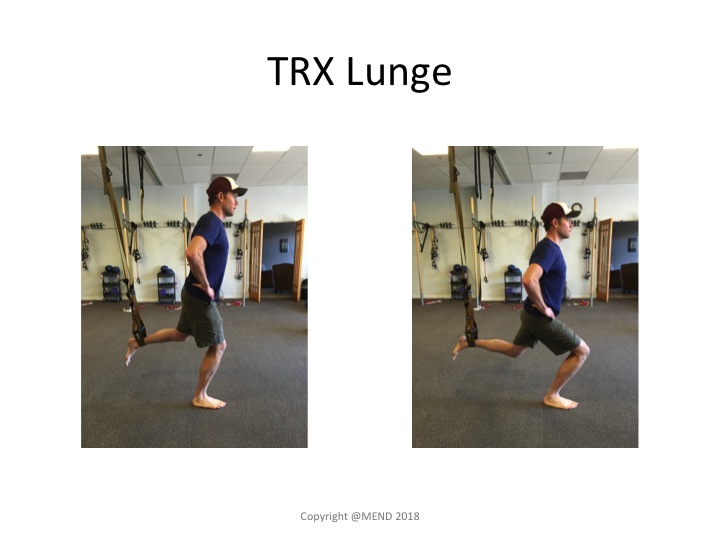Performing traditional strength training movements with an added component of instability has long been know to change the recruitment of muscles. The unstable nature of the exercise enhances position sense (proprioception), balance, and joint stabilization during each repetition. Previous research recommends using stable surfaces and exercises when the goal is optimal strength and power development. In contrast, utilizing unstable surfaces is appropriate for joint stabilization, injury risk reduction, and more sport specific demands.
Krause and colleagues examined the muscle recruitment patterns between a traditional and suspension lunge exercise (Int J Sports Phys Ther. 2018). The authors analyzed lower body muscle recruitment during the movements. They found greater recruitment of the gluteus medius and maximum, as well as, hip adductors in the suspended lunge compared to the traditional lunge. Surprisingly, they found no difference in quadriceps recruitment between the two conditions. The increased hip recruitment demonstrates the increased stability requirements during the suspension lunge.
Click Here to learn how you can improve the effectiveness of your current exercise program.

